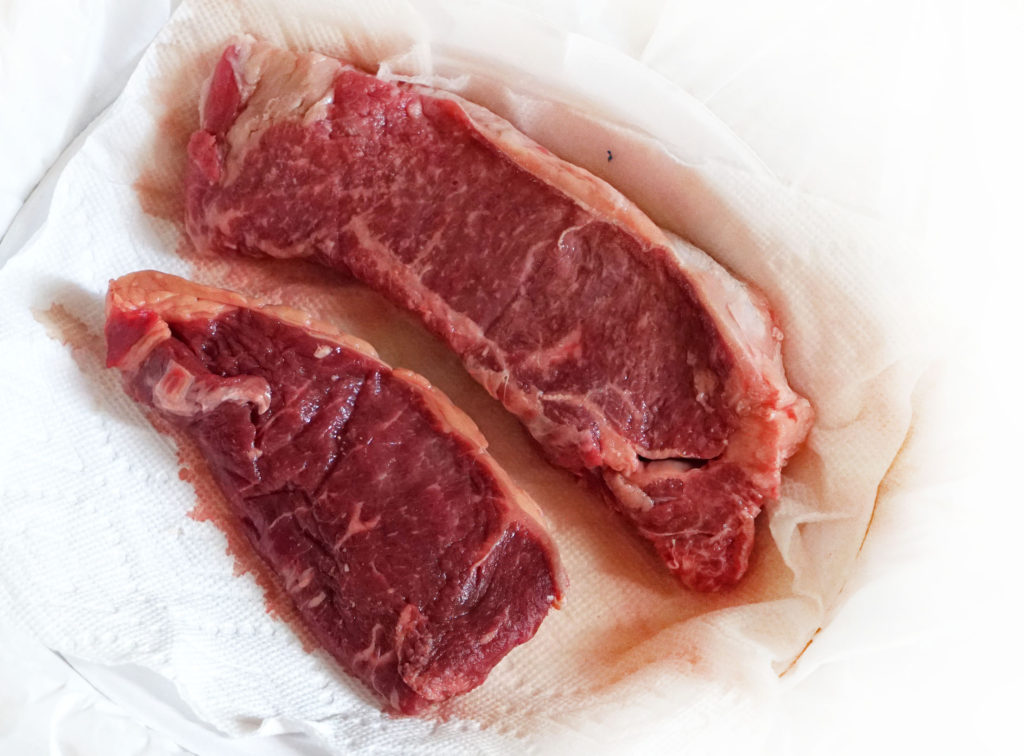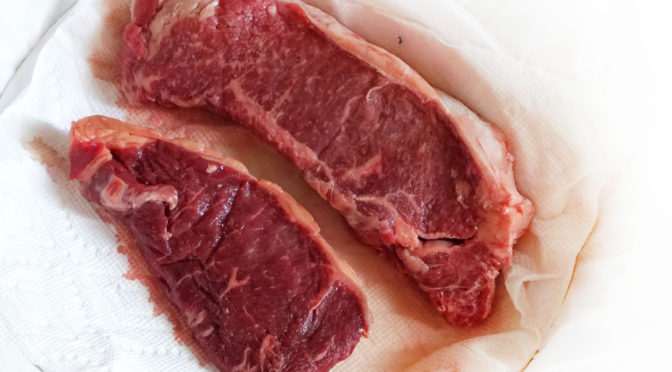All cattle are grass fed. The difference is how they’re “finished” before they go off to be slaughtered into burgers and steaks. “Grass-finished” means they continue to eat grass until the day they die. “Grain-finished” means they get a mix of grains to fatten them up quicker before they are consumed. This “finishing” period lasts a few months, from what I understand.
Typically, a farm or feed yard won’t send an animal off to slaughter until it reaches a certain weight, that way the producer can pull the most value out of the animal. More pounds = more money.
As you might guess, it takes much longer for an animal to get big enough to go to market if it eats nothing but grass. Thus, the grass-finished animal that you see at the market or butcher was older and leaner when it was slaughtered. Older animals produce a darker red meat color in the muscle, with much less marbling within. This can lead to a more tough end product.

Grain finishing allows the fattening process to happen faster, which means the consumer is eating a younger animal. Don’t get all weepy-eyed about the ages of the animals either. Grain-finished animals aren’t babies; they’re 1400 pounds! Besides, eating older animals means you are generally eating tougher meat, potentially from an animal that may have been exposed to more illnesses during it’s lifetime. So young is good. And since grain imparts more fat, the meat is generally more tender and has more marbling. That translates directly into flavor for the consumer.
Depending on what you’re looking for from your beef, you’ll have to decide if grain-finished is your thing, or if you prefer grass-finished. Some people who are concerned about fat content (the difference isn’t huge, by the way), or who like some game flavor, may lean towards grass-finished beef. If you’re like me, however, flavor and tenderness rule the day. That means you should avoid grass-finished and stick to grain.
I find grass-finished beef more difficult to cook properly (it cooks faster). Also, the small difference in fat content isn’t going to stop you from being a fat fuck if you are an over-eater who doesn’t exercise or eat a balanced diet.
Grass-finished animals produce meat which also contains more Omega fatty acids Conjugated Lineolic Acid (CLA). This has been linked to long term weight management, and is thought to have health benefits that help combat a host of diseases, including cancer and heart disease. You just have to be careful with some of the research here, as many proponents of the grass-fed trend are very quick to bash anything that has to do with grain feeding without having the full picture. While I generally don’t particularly fancy the flavor of grass fed beef, the nutritional benefit of CLA is something to consider, and it just further strengthens the argument for consuming beef.
One caveat to this Omega business: The difference in content between grass and grain -finished beef isn’t really big enough to justify excluding grain-finished beef from your diet. If Omegas are what you’re after, maybe work some salmon into your diet, as that seems to contain more. But don’t forget to eat that yummy and nutritious beef either!
One final tip I’ll give is this: If you’re cooking or ordering a grass-finished steak, cook it or order it one temperature step less than you normally prefer, to preserve some nicer texture. If you typically order medium rare, then go with rare.

